General
The photographs in the Vos Collection are mainly of men in uniform, mostly military or paramilitary. Every soldier wore a uniform in the Second World War, to indicate the country or organisation to which the soldier belonged. Uniforms have changed greatly over recent centuries, from decorated parade uniforms designed particularly for their beauty, to the camouflaged uniforms worn on the battlefront. Uniforms have always evoked esteem and impact.
If we look at the Vos Collection from the perspective of the Second World War, several things become apparent. The photographs cover a very wide scope, with no focus on one specific group within the Second World War context. Most of the photos were taken in the periods between the fighting and the soldiers’ homes. There are no true action photos in the collection. Soldiers enjoyed lots of free time between fighting, and the situations we see in the photos therefore largely come across as relaxed. There are also a number of photographs of landscapes, views, nature areas, historic monuments and more besides. Soldiers regularly took such ‘holiday snaps’ to show their families at home that they were having a good time at the front.
The soldiers are seen in different poses in the photographs, with many portrait and group shots as well as more social settings. There are also lots of more personal photos, including civilian portraits; these are probably photographs of the same soldiers that can be seen in other photos in the collection. The photographs can be divided into different groups of people, for example photos of soldiers and photos of other (paramilitary) organisations, such as political uniforms or uniforms of scouting organisations such as the Hitler Youth.
Some of the photos show soldiers in white uniforms. These uniforms, which carry no insignia, are working and training uniforms as worn by German soldiers. The subjects in these photos are often shown at work or standing in groups in front of the barracks which was their temporary home.
Photography played a big role in the Second World War, both for Nazi Germany and for the Allies, among other things as a propaganda tool. In October 1941, for example, the British Army formed a unit of trained photographers and cameramen, known as the Army Film and Photographic Unit (AFPU). They underwent special training for photographing at the front. Germany and America had similar units active. The creation of these units is an indication of how important the respective governments considered photography to be during the Second World War.
Sport and health were also important aspects within the German army; on the photo below we see a member of the air force (right) and a paramilitary from the military police (left), who are competing in a race. There were even special uniforms for these kinds of non-combat activities.
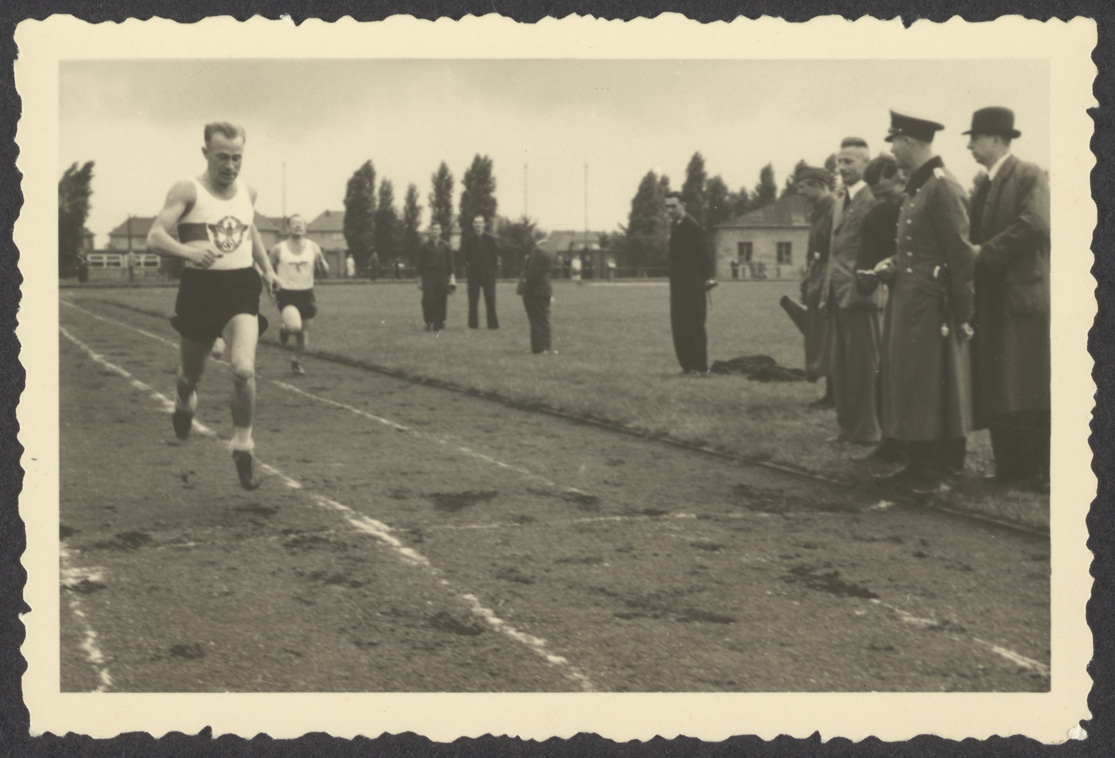
On some photos one or more crosses have been placed next to individuals in the photo. These crosses mean that the person in question has been killed.
Although the Vos collection does not consist exclusively of photos from the Second World War, they do form the majority. They are mainly photographs of German soldiers in WW2, though we occasionally see other uniforms, such as American, British, French, Japanese and Dutch soldiers. All the photographs are black-and-white, which is fairly standard for the 1940s. Although colour photography was around at that time, it was less accessible for the general public than the standard monochrome.
Since most of the photos are not described, the only way to discover the story behind them and what kind of soldiers or paramilitaries they depict is by actually looking at them. The German photos are often in small format (6 x 9 cm), and almost all have a characteristic serrated edge. There are however some German photographs with a straight edge, just as there are photographs of solders from other countries with a serrated edge.
Photography in the German army
During the Second World War, thousands of photographers from the German Propaganda Kompanie (PK) took a total of more than three and half million photographs at the various fronts on which the Germans were fighting. Hundreds of these photos were published in propaganda magazines, books and newspapers and were seen by millions of German and other European readers. These images still offer an important insight into the way Germans and Europeans viewed the War between 1939 and 1945.1
Propaganda
Many German soldiers took photographs in their free time. However, given the importance attached to recording much of what occurred in images, specialist photographers were also recruited. Most of them were volunteers who had approached the Nazis themselves; if they could get themselves taken on as photographers for the propaganda department, they would not have to go to the front to fight, at most occasionally to take photographs.
Propaganda photographers had to adhere to lots of rules that were rigidly enforced. For example, it was forbidden to take photographs of dead or wounded Germans, of liquidations and arrests of Jews and partisans, or to take anti-German photographs. Despite this, many propaganda photographers and soldiers did take photos of this nature. They were not published anywhere, but were often kept and emerged after the War. Some of them were even used in court cases after the War.
These specialist propaganda photographers were frequently present at the front, but they were not the only photographers: lots of personal photographs were also taken by soldiers who were fighting on the front every day.
Privéfotografie
Although not every soldier was able to buy a camera, many were. The Nazi regime even encouraged its soldiers to take photos as a way of strengthening the bond with the home front and improving morale.2
Photos were taken to show back at home, but of course also as mementos for after the War. Soldiers could even buy special photo albums, decorated with an eagle, a tank or an aircraft, for example, which they could use for the photographs they had taken during their service in the German army.
In the past, many people lived and worked in or close to the neighbourhood where they were born. The War changed this. For many soldiers, this was the first time they had travelled across Europe, and they were excited and enthusiastic about what they encountered and the sights they saw, which they eagerly recorded in photographs. Ancient buildings, bridges, monuments, but also the Eiffel Tower in Paris, for example, were favourite photographic subjects. For many soldiers, this was the first time they had ventured outside their home environment, and it made a great impression on them. They shared these feelings with their comrades; recording these shared experiences and moments in group photographs strengthened their mutual bond and meant that they could proudly show those on the home front all the amazing things they had seen and experienced.
Men in different settings
The subjects in the photos are predominantly men. They are photographed in a variety of poses and settings. Some photos in the collection are portraits: men posing in their uniforms for a photograph to send back to their families, for example. In doing so, they were showing their pride in serving in the army, and most of them do indeed look proud. These kinds of photographs were also often used by the families to commemorate a soldier who had been killed.
Other photos in the Vos Collection are of soldiers in military situations, for example during military exercises, between battles at the front or when taking prisoners of war. These photographs clearly reflect the power of the army. They were taken in order to show how well the soldiers were doing and how successful they were.
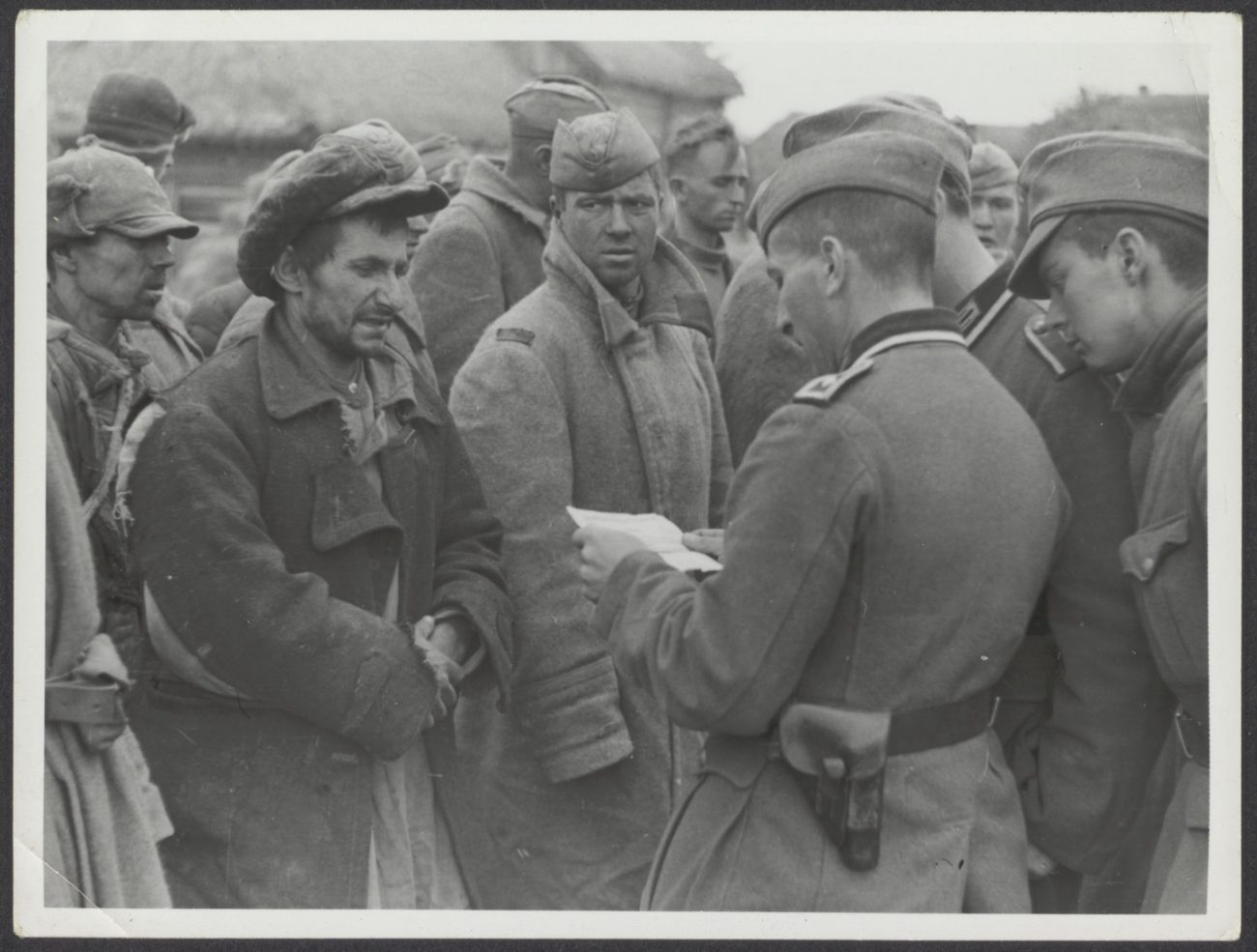
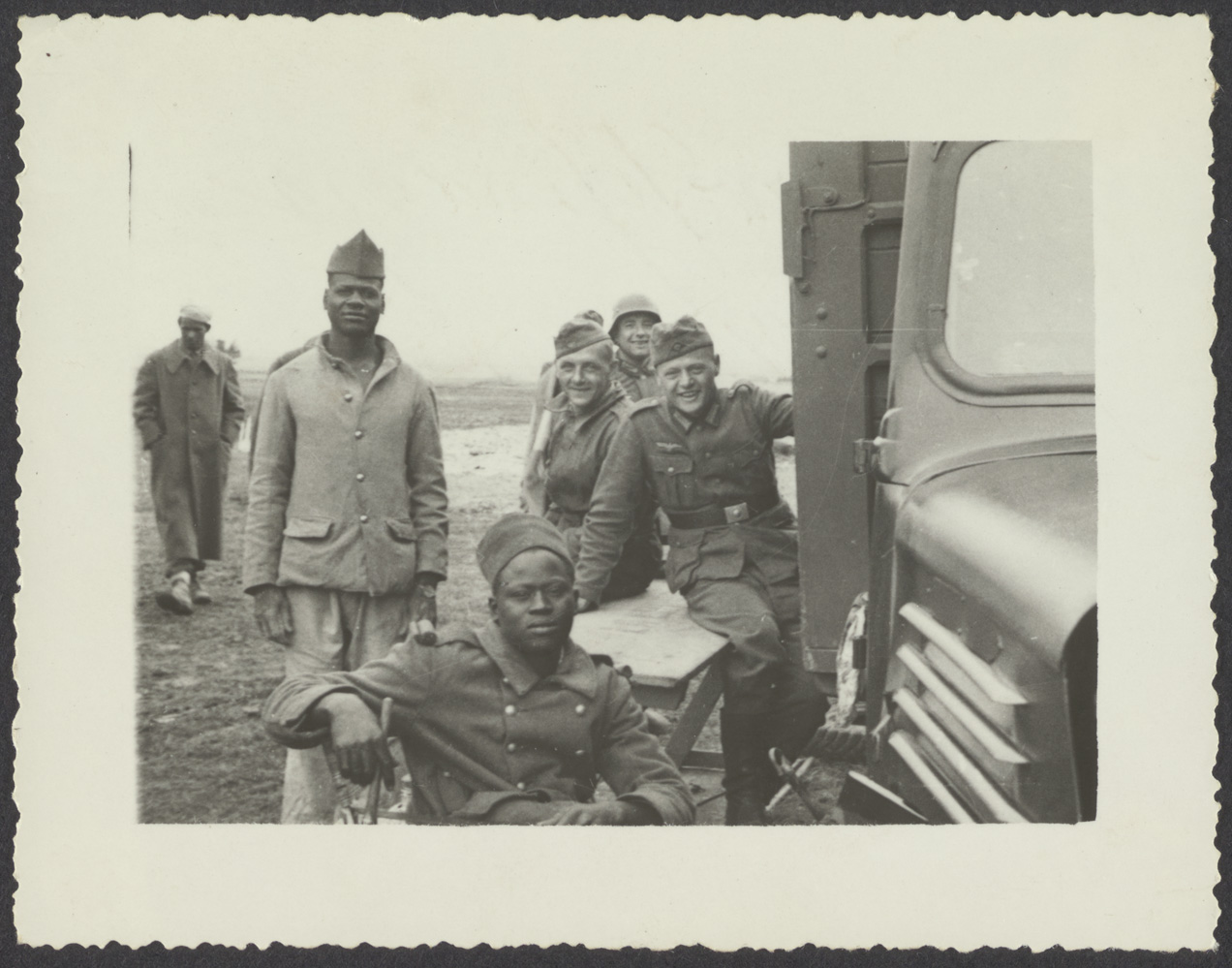
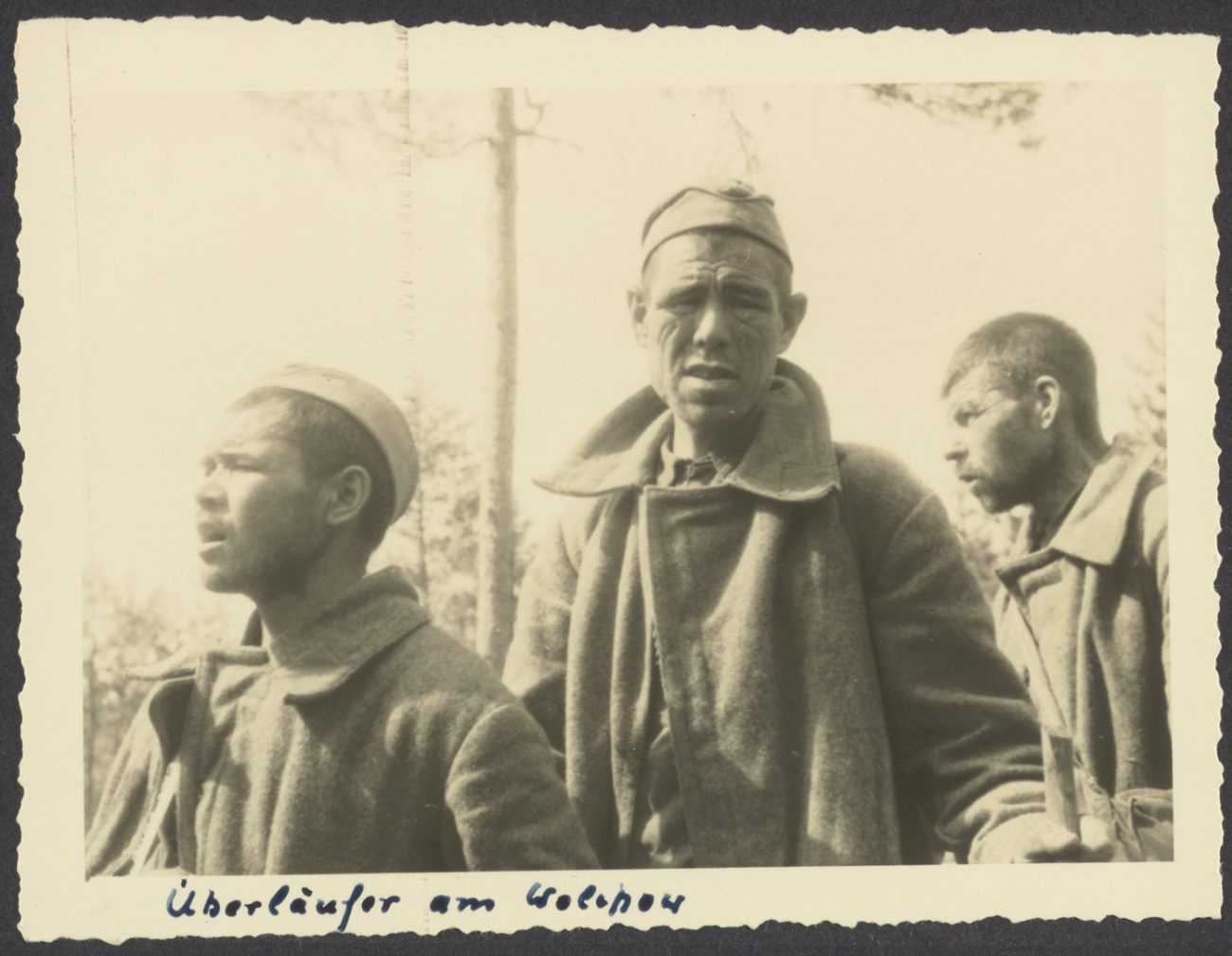
The different settings provide an interesting but also slightly distorted picture of the soldiers. Although terrible things happened at the front during the War, the mood of the photos is positive, because they were mainly taken during periods of calm and with the aim of showing how well everything was going. The fact that terrible things were also happening is not evident in these photographs.
Camaraderie
Another frequent setting in the Vos Collection is the social and familiar. Some of these photos are of a single soldier, while others are group photos. The soldiers are shown sitting or lying with each other amicably on the grass or the beach. In between the fighting, soldiers had a great deal of free time, which they could use as they saw fit. In these photos, they were keen to show the camaraderie and friendship.
There are also photographs set in a common area, for example in the barracks. These photos give a clear sense of the soldiers’ daily lives, the kind of clothing and equipment they used and how they slept, ate and lived.
Exercises
The Collection also contains photos of military exercises and soldiers in readiness for the appèl. During the Second World War, soldiers devoted a lot of time to keeping fit and taking part in military exercises so that they would be in optimum condition when they went to the front for the actual fighting. These exercises also contributed to the military discipline within the army.
The Collection contains photographs of soldiers taking part in marching, sport, labour, maintaining weapons and fighting demonstrations. The photo below is an example of the latter; German soldiers show how to fight effectively with a bayonet to disable the enemy. Fight exercises were carried out with both real weapons and safe replicas. For example, for practising throwing hand grenades, special exercise grenades with no explosive charge were used in the first instance, so that soldiers could get used to using them safely.
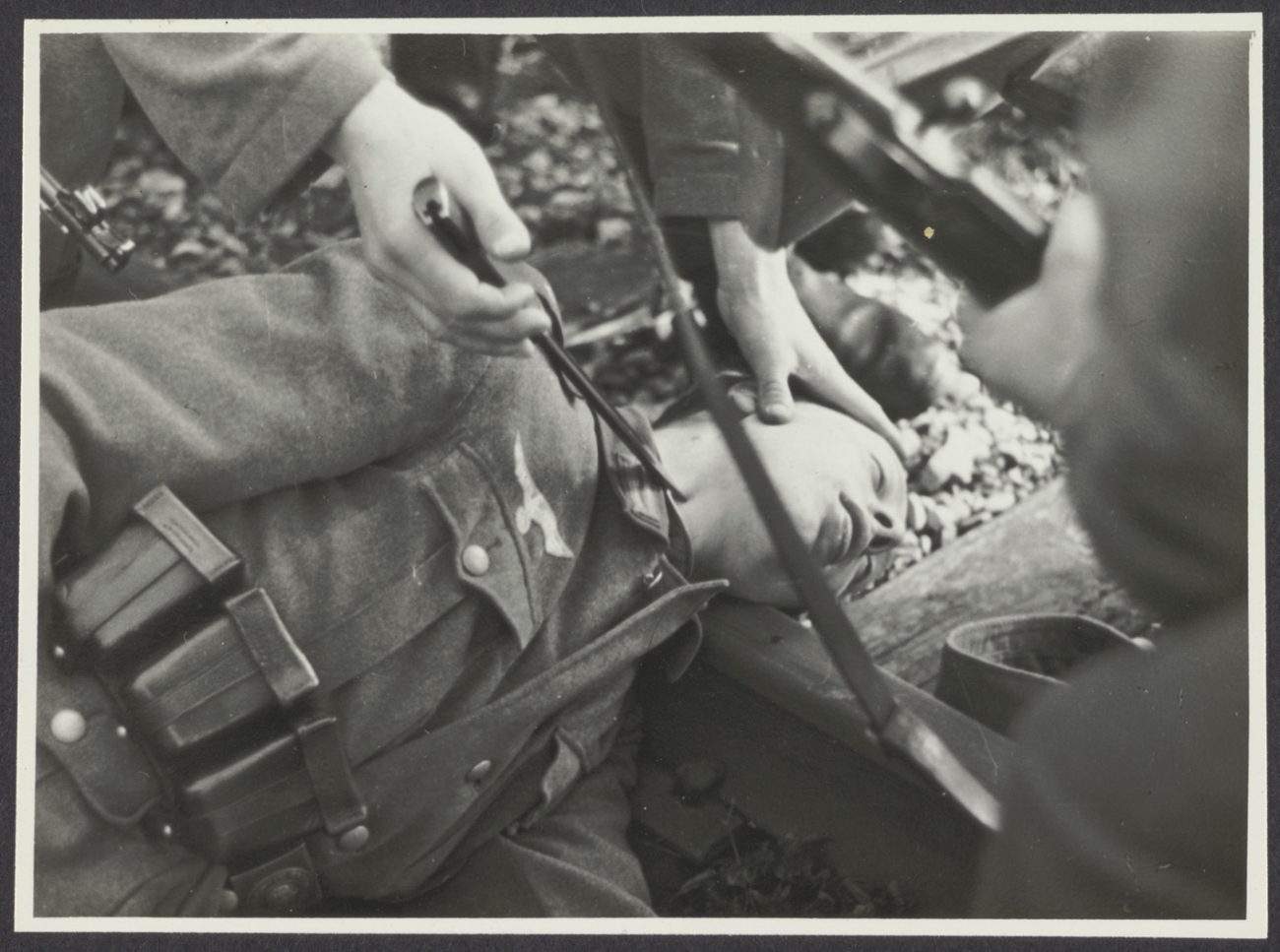
Dagelijkse activiteiten
There was also time for ordinary day-to-day activities such as going to the dentist or the barbers; this was also very common at the front. Many soldiers had additional responsibilities; for example, there were soldiers who had worked as barbers or cooks, or who came from a medical background before joining the army, and they often continued to practise these professions after joining up. The Vos Collection contains a number of such photos.
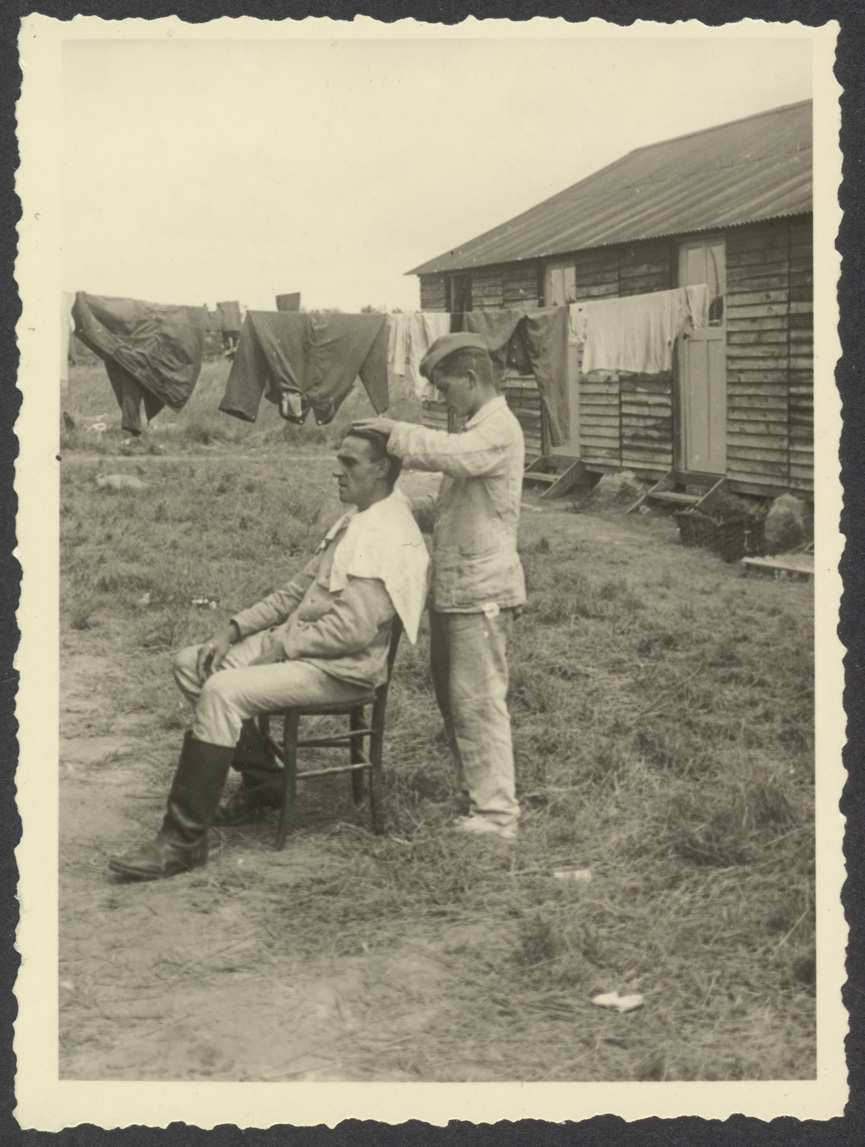
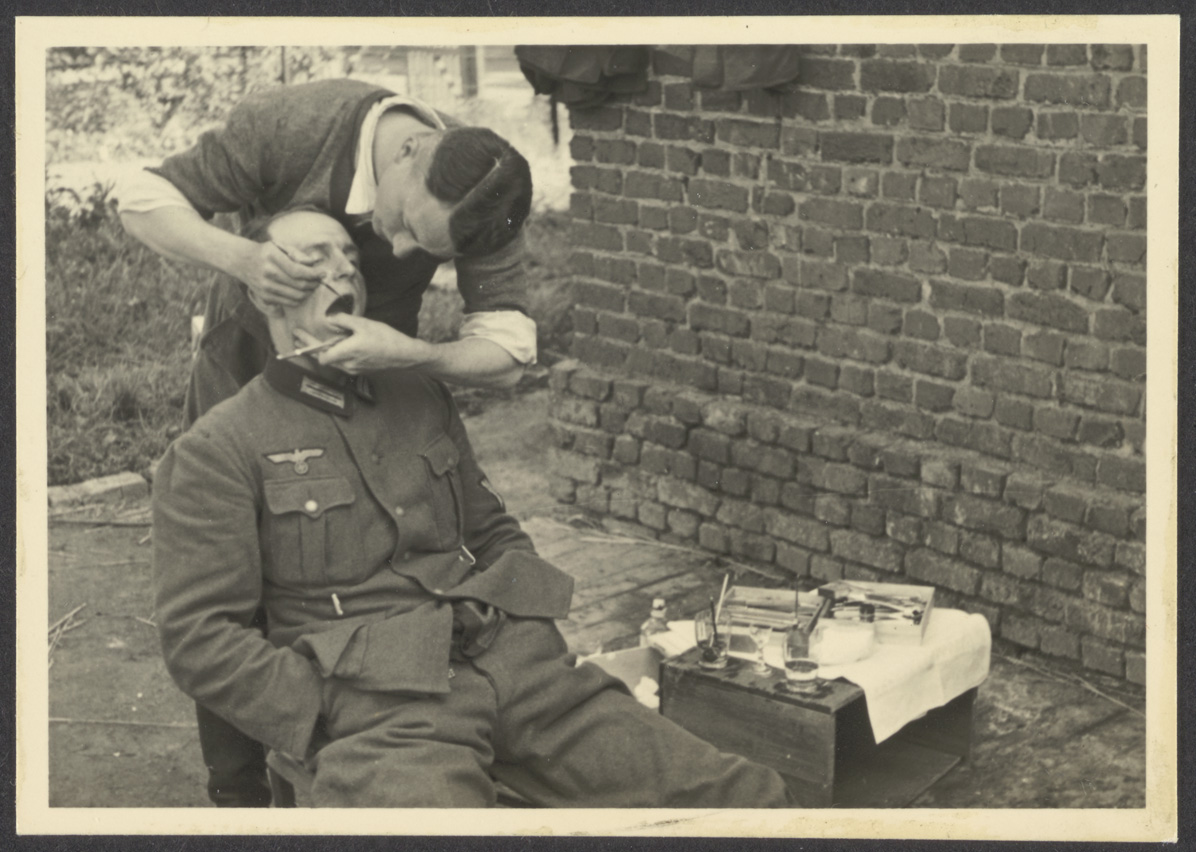
Good health was important in the army: a soldier who was a not healthy would not be able to defend their country adequately against the enemy. Governments devoted a lot of attention to this, and soldiers’ health on the battlefield improved during the War as a result. This can be seen in the photos, several of which depict medical treatments.
Festivities
There was also time in the army for festivities. Making music, playing cards, putting on performances at barracks and for German soldiers, celebrating Adolf Hitler’s birthday or a national holiday were all important for soldiers. Not everyone was able to go home on public holidays, to celebrate Christmas with family, for example. Soldiers on the front, in the hospitals or in the barracks therefore often organised their own Christmas tree so they could celebrate Christmas together. Being together and celebrating festivities contributed to the group morale and camaraderie between the soldiers.
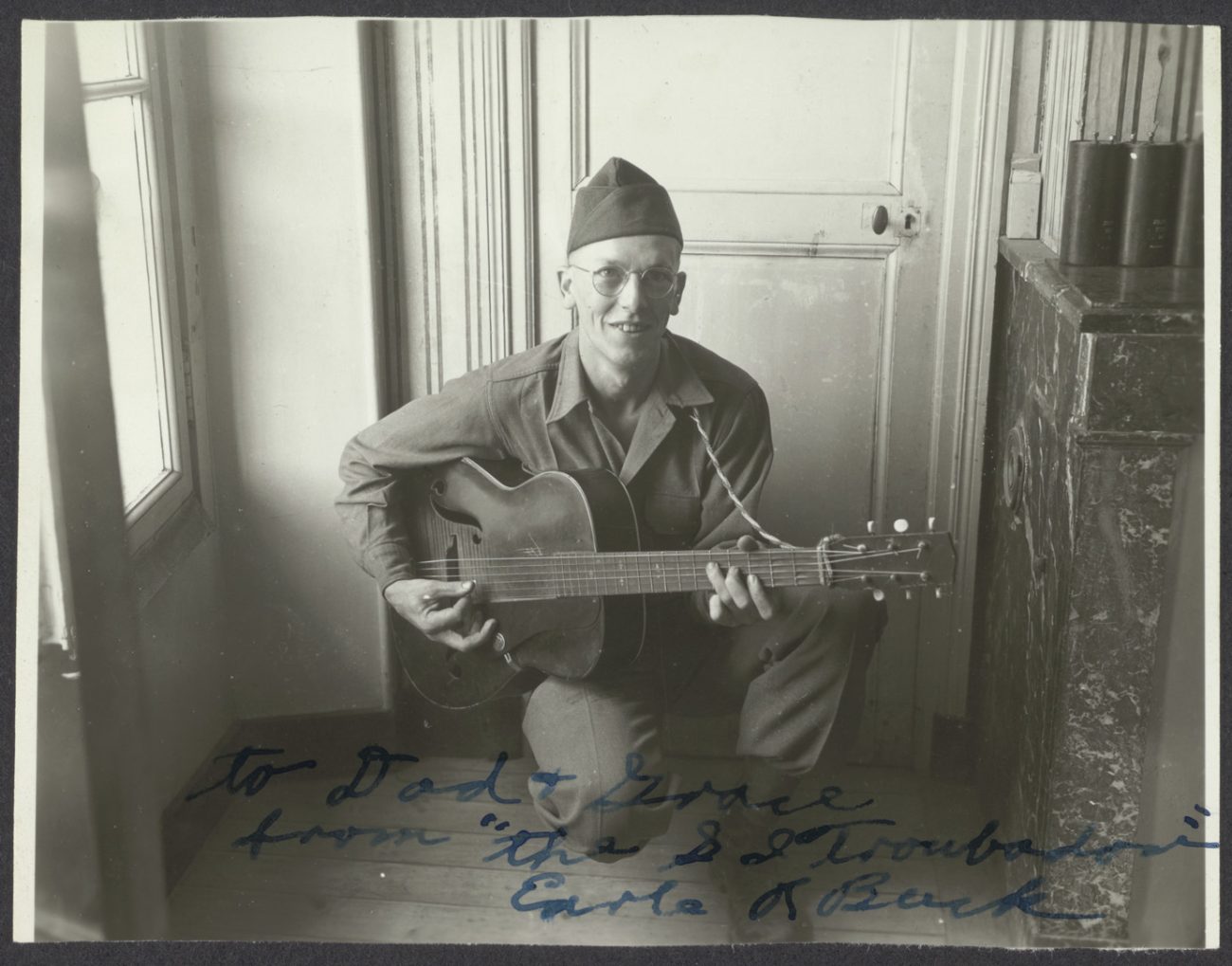
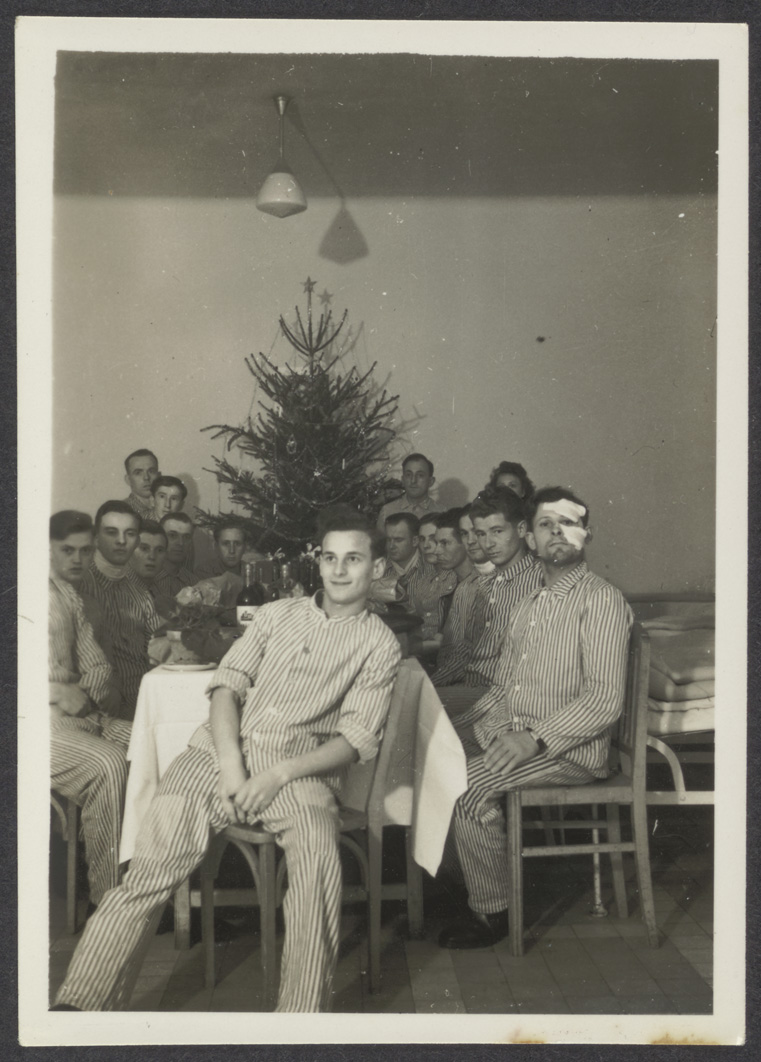
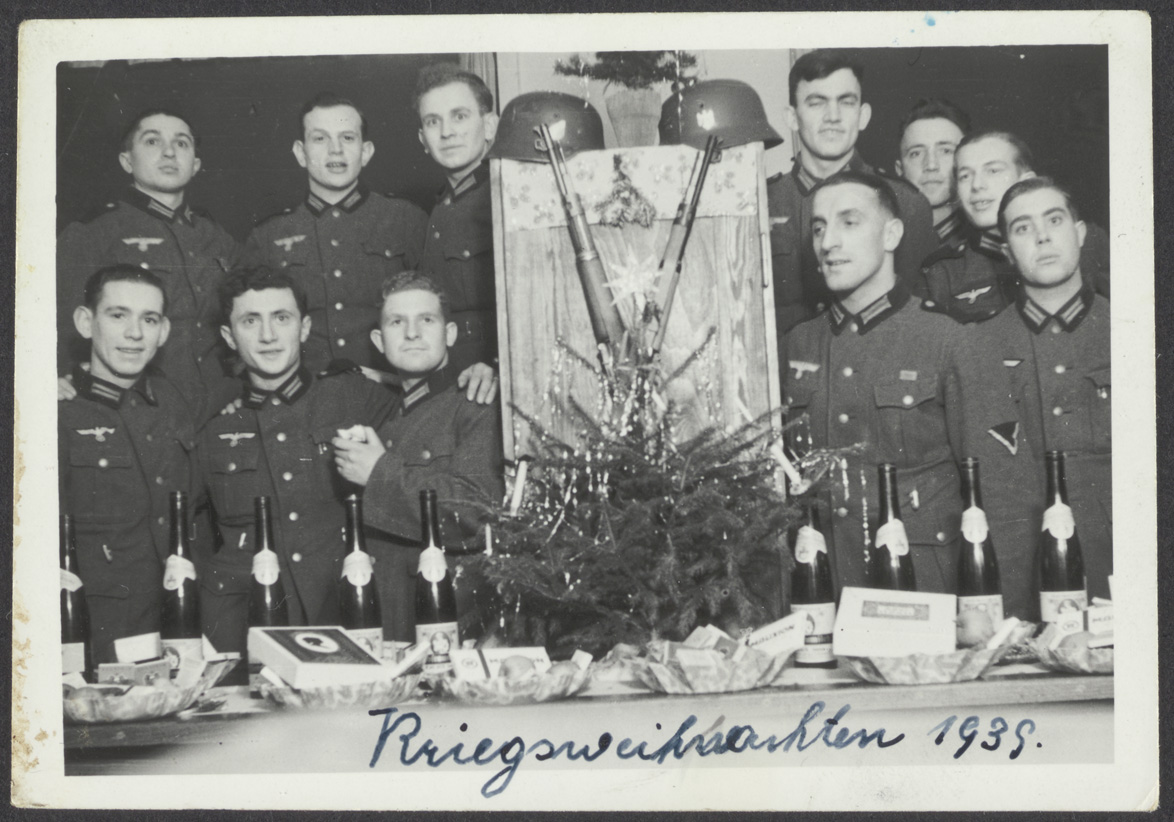
Information
- [1] https://notevenpast.org/photographing-the-german-air-war-1939-1945/
- [2] https://www.spiegel.de/international/images-of-world-war-ii-how-the-camera-became-a-weapon-a-339728.html
